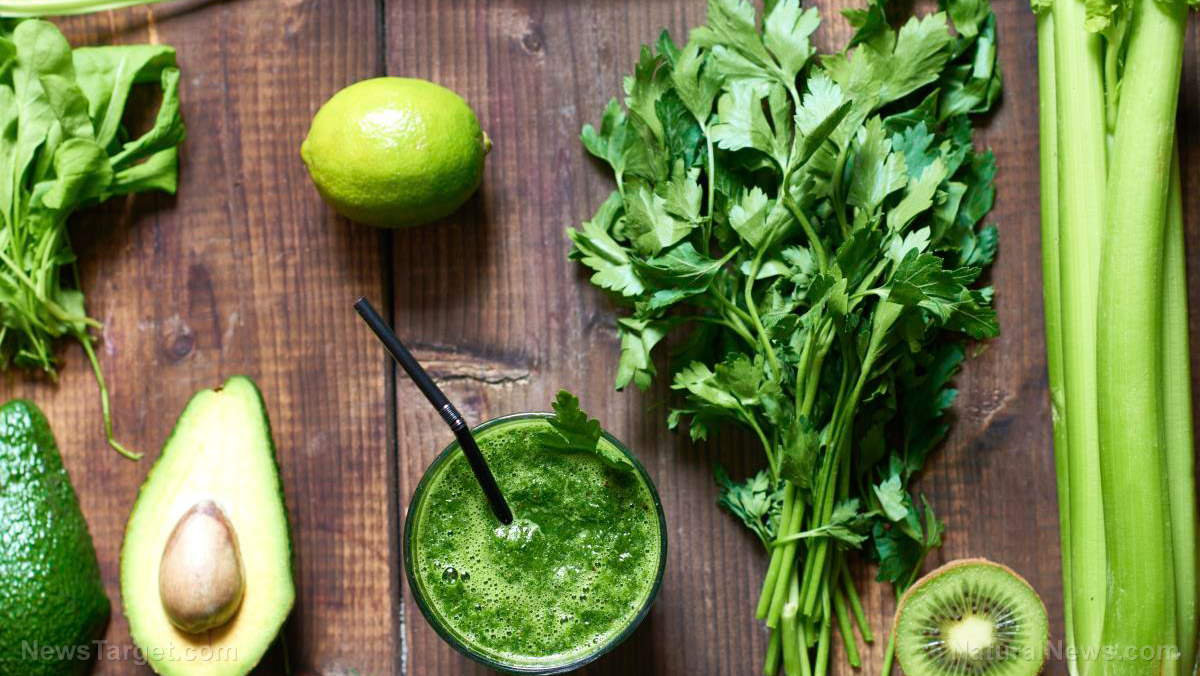
Advertisement
Chlorophyll helps make plants green and healthy. But did you know that this pigment also offers several health benefits when consumed regularly because it contains vitamins and antioxidants?
Chlorophyll: Good for plants and humans
You can boost your chlorophyll intake by eating more leafy green vegetables or taking supplements, but the latter seems more effective since chlorophyll may not survive digestion long enough for absorption.
Chlorophyll supplements are made up of chlorophyllin, which contains copper instead of magnesium. When you take doses of chlorophyllin, copper can be detected in your plasma, which suggests that absorption was successful.
Chlorophyllin has similar properties to chlorophyll.
Here are some of the amazing health benefits of chlorophyll:
Detoxification and cancer prevention
Scientists have tried to learn the effects of chlorophyll and chlorophyllin on cancer.
According to an animal study in trout, depending on the dose, chlorophyll helped reduce the incidence of liver tumors by 29 to 63 percent and stomach tumors by 24 to 45 percent.
In a 2018 study, researchers looked at the effect of chlorophyll on the growth of pancreatic cancer cells. Findings showed that taking oral chlorophyll daily significantly reduced tumor size in mice transplanted with human pancreatic cancer cells.
The results of a small study in humans also showed that chlorophyll can help limit ingested aflatoxin, a cancer-causing compound.
Natural blood builder
In a 2004 pilot study, researchers found that wheatgrass, which contains 70 percent chlorophyll, reduced the number of blood transfusions needed in individuals with the blood disorder thalassemia.
Promotes weight loss
Research also suggests that liquid chlorophyll can help promote weight loss.
In a 2014 study involving 38 female participants, results showed that those who took a green plant membrane supplement that included chlorophyll once daily had greater weight loss compared to a group that didn’t take the supplement.
The scientists also reported that the supplement reduced harmful cholesterol levels.
Reduces inflammation and promotes skin healing
In 2018, experts reviewed studies on papain-urea-chlorophyllin ointments for wound care. Studies suggest that this ointment is more effective than other treatments, but the reviewers said that larger, better-controlled studies will help confirm these findings.
According to two pilot studies, chlorophyllin can also help treat other skin conditions. A pilot study is a small-scale preliminary study performed before a larger study or trial.
A 2015 pilot study involving 10 participants with acne and large pores reported skin improvement after topical chlorophyllin gel was used for three weeks.
In a different 2015 pilot study, scientists also worked with 10 volunteers. Findings showed that using topical chlorophyllin for more than eight weeks improved sun-damaged skin.
Chlorophyll as a natural deodorant
Since the 1940s, chlorophyllin has been used to neutralize certain odors. However, studies are outdated and report mixed results.
In one recent study, scientists worked with individuals who had trimethylaminuria, a condition that causes a fishy odor. They found that chlorophyllin helped significantly reduce the participants’ trimethylamine levels.
Trimethylamine is a chemical compound with a pungent odor similar to rotting eggs, rotting fish, garbage or urine. As trimethylamines build up in your body, it can make you emit a strong odor in your sweat, breath and urine.
Considerations before using chlorophyll
Natural chlorophyll and chlorophyllin aren’t considered toxic, but they may cause the following side effects:
- Diarrhea
- Digestive problems
- Green, yellow, or black stool often mistaken for gastrointestinal bleeding
- Itching or burning when applied topically
Scientists have yet to determine the effects of taking chlorophyll when pregnant or breastfeeding. Chlorophyll and chlorophyllin may also negatively interact with some medications, so consult with your doctor before taking them.
Tips for taking chlorophyll supplements
You can buy chlorophyll supplements at health food stores, natural food shops and drug stores. As a supplement, chlorophyll comes in tablet, liquid, spray, or ointment form.
The average dosage of chlorophyllin supplements is between 100 to 300 milligrams (mg) per day over three divided doses, according to the Oregon State University.
You can incorporate chlorophyll into your diet by adding a liquid form to recipes like green smoothies. Alternatively, you can add powdered chlorophyll to water, juices or sauces.
Natural chlorophyll recipe
Follow this simple recipe to make liquid chlorophyll at home using parsley and water.
Ingredients for 2 tablespoons of chlorophyll:
- 80 grams picked curly parsley leaves
- 6 cups water
Preparation:
- Wash the parsley leaves and pat them dry.
- Place the parsley leaves and water into a blender, then process for several minutes until the mixture turns into a bright green liquid.
- Strain the mixture with a fine sieve and pour it into a saucepan.
- Place the saucepan over low heat and slowly stir the mixture until you see green particles rising to the surface.
- Pour the mixture into a container with a handful of ice. Refrigerate the container to cool the mixture.
- Once cooled, the chlorophyll will separate from the water and look like algae. Pour the cool mixture through a muslin-lined sieve, but don’t push the mixture through. Tap the sieve gently and once drained, dispose of the water.
- Scrape the green paste on the muslin and transfer it to an air-tight container. The green paste can be refrigerated for up to one week. You should have at least two tablespoons of chlorophyll.
You can also boost your chlorophyll intake by eating fresh, green herbs and vegetables like:
- Arugula
- Collard greens
- Green beans
- Green cabbage
- Green tea/matcha
- Leeks
- Mustard greens
- Parsley
- Peas
- Spinach
- Wheatgrass
According to experts at Oregon State University, one cup of raw spinach contains about 24 mg of chlorophyll. Other greens will average four to 15 mg per cup.
Wheatgrass juice therapy has chlorophyll-related benefits
Wheatgrass can benefit people with certain conditions or those who need:
- Anticancer therapy
- Blood transfusions
- Laxatives
- Liver detoxification
- To prevent tooth decay
- Ulcer healing
You can purchase wheatgrass at a local health food store or farmers’ market. Alternatively, you can grow wheatgrass at home or use wheatgrass powder.
Boost your overall health by incorporating chlorophyll into your diet and increasing your intake of fresh, green vegetables like arugula, parsley and spinach.
Sources:
Advertisements







